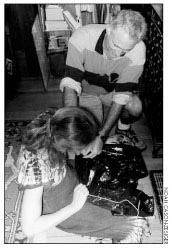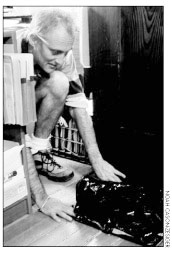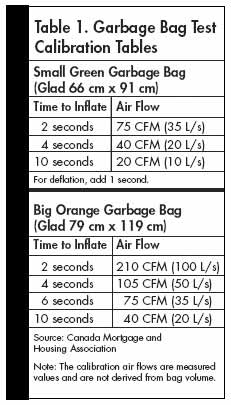Getting ready for the summer? Want to be more comfortable and save some money? Then pay attention. A good percentage (up to 30% by some estimates) of energy for heating and cooling homes is lost through leaky ducts.
The California Energy Commission rightly figures that connecting a high efficiency furnace to leaky ducts is like ordering a diet drink along with an ice-cream sundae. It helps, but not much. So the commission in 2006 began requiring that contractors who install furnaces or air conditioners in homes check the home’s ducts first.
But what if you don’t want or need a new furnace or air conditioner and want to do what you can right now to save energy, money, and the Home Planet? Got a coat hanger and a garbage bag?
Many people in the building performance field know about a certain, easy-to-perform air flow test that involves common household items. The Canada Mortgage and Housing Corporation (CMHC) began publicizing the Garbage Bag Air Flow test in the early ’90s and tested it in the field. One of the first uses of the garbage bag test was for someone in Canada who was getting no heat on the second floor in his new house. Several contractors tried to solve the problem with no success. The man’s furnace was oversized, as is true in most new housing, so there should have been no shortage of heat. The garbage bag test showed that only 2 of his 18 supply registers had flows greater than 10 cubic feet per (CFM); as my mother used to say, this is slower than molasses in January moving uphill in a snowstorm. The Canadian homeowner called a contractor to fix the problem and now his whole house is warm in the winter and cool in the summer and his utility bills are not outrageous.
Performing the Test




